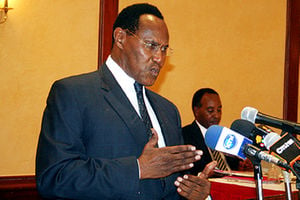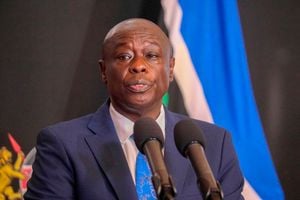New Zealand achieves gender parity in its cabinet
What you need to know:
- New Zealand Prime Minister Chris Hipkins promoted Ms Willow-Jean Prime to Minister for Conservation last week, making the country one of the first in the world to have an equal number of men and women in its cabinet.
- Following in the footsteps of his predecessor Jacinda Arden, Mr Hipkins has cumulatively promoted three women to cabinet in his short tenure.
New Zealand has become one of the first countries in the world to have an equal number of men and women in its cabinet.
This is after the country’s Prime Minister Chris Hipkins promoted Northland Member of Parliament (MP) Willow-Jean Prime to Minister for Conservation during a cabinet reshuffle last week. The latest development brings the number of women in New Zealand's cabinet to 10, which matches 10 male members.
Further, the Pacific country has also become the state with the highest number of female lawmakers in the Organization for Economic Cooperation and Development (OECD).
The groundwork for the recent milestone was sent by former New Zealand Prime Minister Jacinda Arden, who made numerous inclusive and progressive appointments during her tenure.
In 2020, the Labour Party under Ms Ardern won 64 of the 120 parliamentary seats of which more than half were female candidates. That was one of the most diverse parliament ever elected with 58 women elected, 25 Māori (New Zealand's indigenous people) and at least 10 per cent of parliamentarians identifying as LGBTQ+.
Female lawmakers
The elected group of parliamentarians also included Members of Parliament of Chinese, Eritrean, Indian, Iranian, Korean, Maldivian, Mexican and Sri Lankan descent.
Still, during her tenure, New Zealand made history when female lawmakers became the majority, narrowly outnumbering their male counterparts in Parliament. Soraya Peke-Mason had the honour of tipping women into the majority last October, when she was sworn into parliament.
The milestone placed the country among the few in the world with majority female legislators.
According to the United Nations, the feat has only been achieved by Rwanda, where more than 60 per cent of its lawmakers are women, Cuba (53 per cent) Nicaragua (51 per cent) Mexico (50 per cent) and the United Arab Emirates (50 per cent).
Following in the footsteps of his predecessor, Prime Minister Chris Hipkins has cumulatively promoted three women to cabinet in his short tenure since Ms Arden’s resignation.
While picking his first cabinet in February, Mr Hipkins appointed Wellington-based MPs Ginny Andersen as Minister of Police and Barbara Edmonds as Associate Immigration minister.
The prime minister told BBC the decision to appoint Ms Prime as a cabinet minister was based on a combination of her skills and existing portfolios. Ms Prime now holds the conservation and youth ministerial portfolios. Her promotion also takes Māori representation in New Zealand's cabinet to a record of six ministers.
Now that the country has reached gender parity at the decision-making table of the cabinet, the body of senior ministers responsible for most important policy, legislative and spending decisions, Prime Minister Hopkins is confident that the country is well-represented in government.





